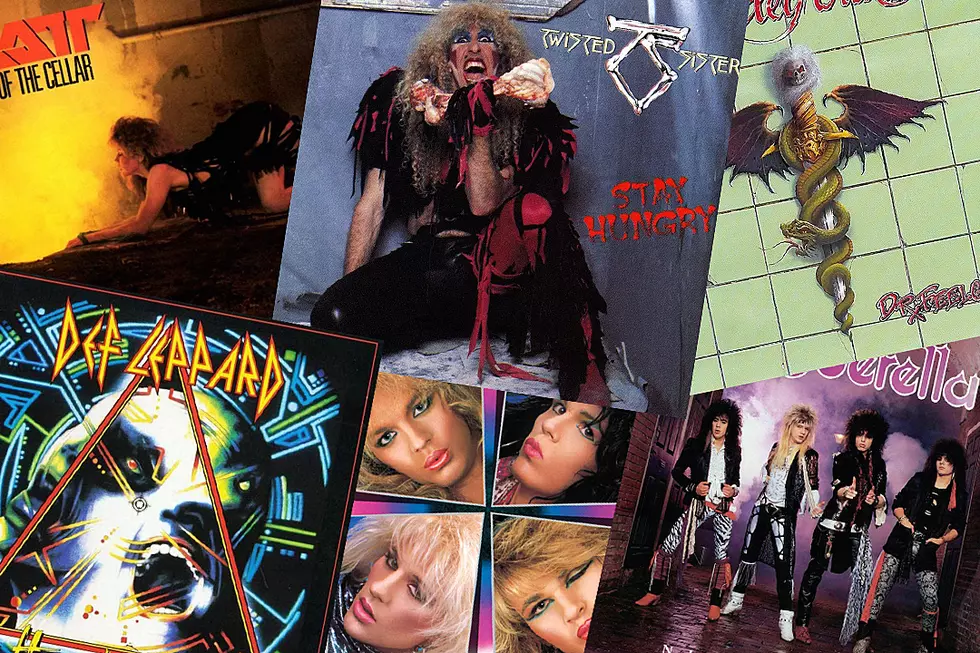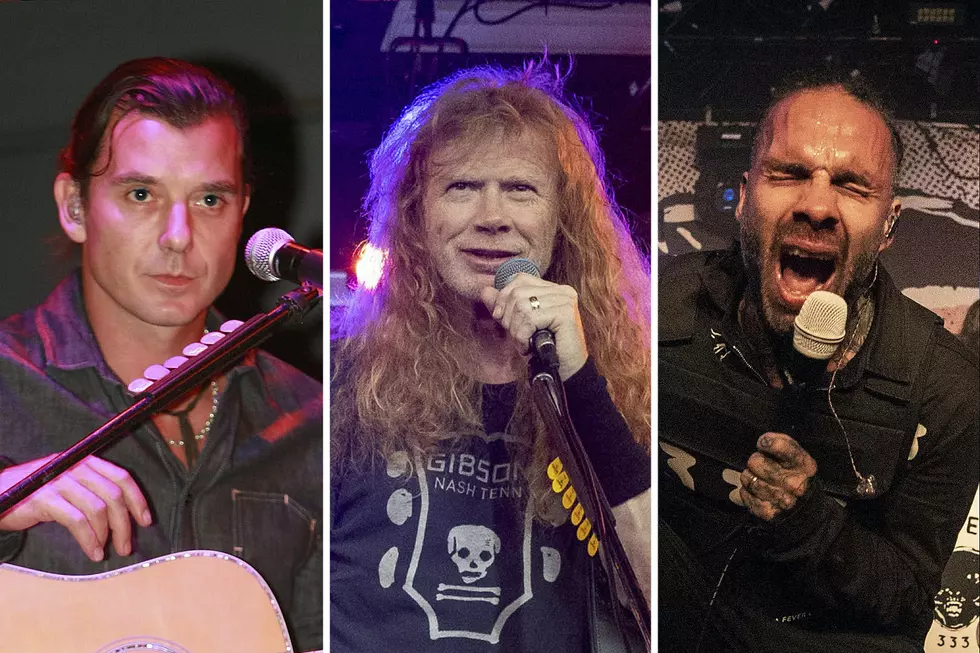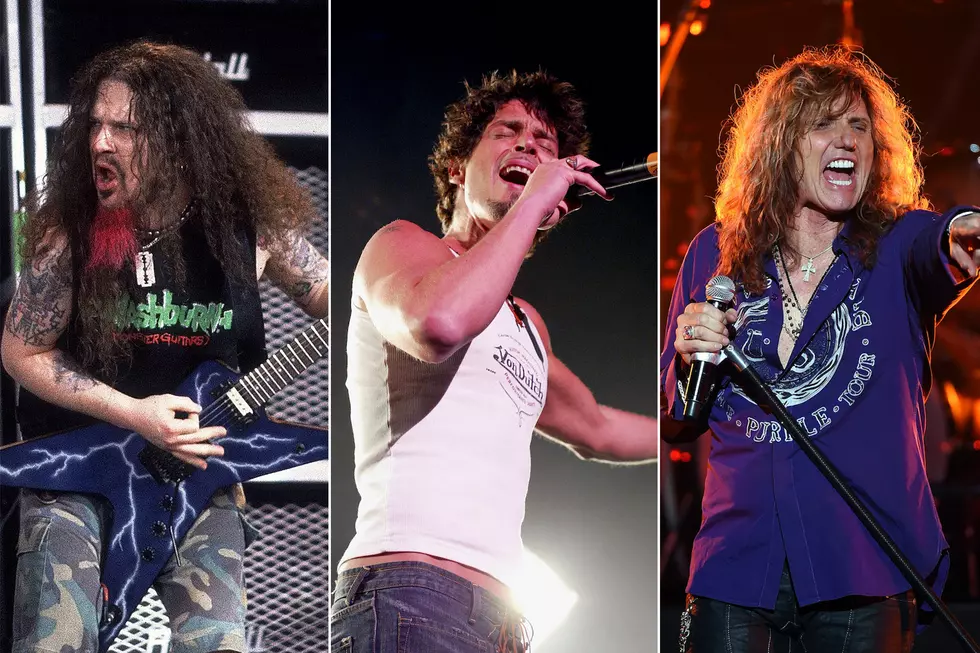David Coverdale Says ‘I Thought I Was Done’ Before Whitesnake’s Breakthrough: Exclusive Interview
At first glance, it’s the incredible commercial success of Whitesnake's self-titled album from 1987 that sticks out. The album has sold close to 10 million copies in the U.S., partially driven by the chart-topping success of “Here I Go Again,” which had been rescued from its initial placement on 1982’s Saints & Sinners LP and given a new coat of paint.
The hit power ballad “Is This Love” came close to matching that success, stopping at No. 2 on the chart. Two other singles, “Still of the Night” and “Give Me All Your Love,” helped to ensure that the British hard rock band was a constant presence on the radio and on MTV.
But leading up to the release of Whitesnake, leader David Coverdale found himself dealing with vocal issues after sinus surgery, which required a long recovery period. Producers shuffled in and out, and, according to Coverdale, there was no shortage of dissension within the ranks -- something that eventually drove a permanent wedge between the singer and guitarist and collaborator John Sykes. By the time the album was completed, Coverdale dismissed the band members who recorded the record and brought in new players for the tour in support of the album
In hindsight, it’s remarkable Coverdale was able to complete the album and have it turn out to be as successful as it was. A new 30th-anniversary box set arrives on Oct. 6 and gives fans the chance to check out a bunch of previously unreleased material from the era. The four-CD/one-DVD collection includes a remastered version of the original album that restores tracks that were released on overseas copies. As you dig further into the set, the real gems emerge, including a full disc of demos and rehearsals that reveals the collaborative chemistry between Coverdale and Sykes.
There are also discs that document the 1987-88 tour with guitarists Adrian Vandenberg and Vivian Campbell, bassist Rudy Sarzo and drummer Tommy Aldridge, and collect the radio and single mixes along with the 1987 Versions Japanese EP. A DVD gathers the videos, a new documentary and more.
It’s a collection that should keep fans busy, Coverdale tells Ultimate Classic Rock in the first part of a two-part interview.
Your Twitter account is always quite entertaining. How much time would you say you spend tweeting? Do you have those pictures that you tweet out on your computer or do you dig that stuff out?
It’s interesting. I have a network of friends that we’ve always had -- and some very well-known people. We share funnies and s--- that we think is amusing. And if it isn’t too blue or whatever, I’ll use it for Twitter. When I started getting involved with social media, it would take significantly more time for me when I had the Whitesnake.com BBS, the bulletin board. Because that would be more like me doing interviews with people. It was fascinating, because the fans asked a lot of questions that most journalists don’t f---ing bother with. A lot of journos don’t do the research -- it’s just another gig to them. To me, I try to make each interview more of a conversation, but interesting and not the same. But I can’t really give too many alternate answers if the questions are all the f---ing same.
[Interacting on the bulletin board] took an awful lot of my time. But when Twitter started, it’s just nothing. I just take my phone out. My sole purpose of being involved in social media is information, entertainment and interaction. If the internet stopped tomorrow, it wouldn’t affect my life at all. It’s just like now, we have millions of people who act as A&R men and women for us.
Which is pretty cool.
Yeah, and one of the things is that I’ll tweet stuff about my life thoughts, philosophies or whatever, the benefits of getting up there now and still being actively involved. This year we’re involved in at least eight f---ing projects. It’s pretty whack. I think it’s the most I’ve ever been involved with. And this has been a monster, the 30th anniversary. But with Twitter, it doesn’t take any time at all, and I do have a s----load of pics from my history. Either people will tweet them and I’ll go, “F---, I haven’t seen that one before!” There’s a ton of [Deep] Purple stuff I’ve never seen. We only used a couple of photographers on the inside track [back then], but I’ve never really been a nostalgia guy, so I never really kept s---. Once we started getting involved with social media, the hugely glaring necessity is content! How do you make it interesting? So I think we’ve started off doing a rather unique thing.
Looking at the story of this album, it seems like you really had an adventure just making it. Put to the side for a second how successful this album ends up being, there was probably a moment when you got finished making the album, where you’re just glad that you ended up with a finished record.
I thought I was done. I thought it was over. I thought it was “Stick a fork in me, I’m done.” I was very substantially in debt due to not working for two or three years, and there had been terrible advantages taken while I was recovering from [sinus] surgery and unable really to function in a professional environment. And people who I trusted, I found out I couldn’t trust. So the album became extraordinarily expensive -- the most expensive Whitesnake album ever. And it was minimal to do with me. [Laughs] So that was the primary reason -- for me, in a relationship, if you can’t trust your partner or partners -- it’s time to move on. I had flown home from a very sad Christmas holiday with my daughter in Munich and she was kind of punishing me, understandably, because I’d left her mom. So I flew home from Munich to L.A., pretty depressed about it and very sad.
I was living in a beautiful hotel in Los Angeles at the time called the Le Mondrian. In those days, it was a hand-painted hotel that looked like Piet Mondrian’s work, created by an Israeli artist called [Yaacov] Agam. It’s different now -- it’s a Philippe Starck place, I think. But you know, it was pretty happening. I knew the owners, and they knew I was looking for apartments and they offered me a beautiful suite at the hotel, so I had the life of whoever f---ing Riley is for like three years or something, until Tawny [Kitaen] and I made a commitment to each other. It was amazing. I got back to the hotel completely exhausted from the journey, emotionally and physically, and I also got the flu. So I walk into my suite, just a basket case and sitting there is a production cassette from Geffen, with a completely different running order than I’d proposed, so I knew it was [John] Kalodner. And what I should have done is just have a hot bath, gone to bed and listened to the thing fresh the next day. But no, no, no -- exhausted, f---ed-up me puts the headphones on, cranks it up and I thought it was awful. I just couldn’t hear it properly, you know [when you’re sick], how your ears, you lose all of the highs and stuff. Your hearing goes when you have the flu. I thought it just sucked on ice. And so I thought, “Well, I’m done. I’m completely f---ed.”
But amazingly, it was filtering out to [people] like Doc McGhee and other people would be calling me going, “F---, I just heard your album, it’s amazing.” So it was other people’s responses and reactions that actually got me to listen to it with fresh ears. I was ready to [say] “F--- it, I’m done.” And then I started hearing it. I started to work with Marty Callner on preparing for the videos and stuff and suddenly the f---ing world just explodes. I remember thinking a lot of my youth was black and white, you know, monochrome in post-war England. Everything seemed to be black and white, and then the Beatles came along and everything looked like f---ing rainbow colors! Well, I had my own little experience like that. It was astonishing. I was almost three million dollars in debt and in three months, I was in credit. That’s how extraordinary it was.
That’s unbelievable.
Well, when you’re selling 300,000 to 400,000 records before noon on consecutive days -- I think we may still have the Warner Bros. record for most records sold between 10AM and noon, which was like 390,000 albums -- it was breathtaking. We had radio, they adored the Slide It In album. They’d helped push it to like, 800,000 copies with minimal effort on my part. So radio was waiting for it, but the huge difference was MTV.
Oh, I bet. Those videos were something else.
Yeah, well, you know, it had nothing to do with the f---ing music! [Laughs] But they were good eye candy and it was actually fun to watch them over again while we were doing the remastering. I wish we’d had more outtakes, but the director became ... I don’t know why he’s so bitter -- he got paid very well and got a huge name out of it. But a lot of people from that time just wouldn’t cooperate, sadly. We could have actually made it an even bigger project than we did. But I’m very happy with what we came out with. One of the things specifically is that you can hear as [John] Sykes and I are introducing these brand new songs to each other on the Evolutions CD.
Watch Whitesnake's 'Is This Love' Video
Which is awesome.
Yeah, to me too! It’s the most played f---ing thing from that project when I’m working out or whatever. And there was a couple more songs, but John’s people didn’t get back to us in time before we had to pull the plug on the deadline. But it started off, like, “Is This Love” was for Tina Turner originally. EMI had asked me, and then David Geffen said, “You’re f---in’ keeping it!” And thankfully so! Arrogantly, I scream at the beginning of it, “This is a chorus that will take over the world” -- and it f---ing did! I am at least a man of my word. But the bonuses, it took me back to, at that time, John and I were really good. You can hear the creativity, the juice, the electricity between us, the attitude, my singing.
It’s only cassette copies that we ran through restoration apps forever to get as good quality as possible for the fans, but you can hear the potential of John Sykes and David Coverdale, when there was no one else around us. It’s when we took everything to Los Angeles, and then L.A. started f---ing around with us, for whatever reason, things started to unravel somewhat. But it was really when I was recovering from surgery that suddenly I find out, I’m getting invoices, my accountant is getting invoices from Toronto, from f---ing London, it’s like, who the f--- is doing this? Who is signing off? So I just went, “Stop, right now. Pull the plug.” We ended up finishing off the album with Keith Olsen. So it was the most fractured record I’d done and still is today. It’s still a f---ing handsome seller, to be perfectly honest with you, in a changed industry. But my God, talk about a game changer, it was huge.
You mentioned Keith Olsen, and at some point early in the sessions prior to that, you worked on vocals with Ron Nevison.
Oh Christ! I’d forgotten that. That was awful! [Laughs] It didn’t sound good at all. It was very short -- I think maybe one day or two days. We were working in One on One Recording [which was owned by] Burt Bacharach [and his] partner, Hal David, so I met Hal David and stuff. I’m a huge fan of eclectic music and I love Sinatra and all of that kind of stuff, and I thought Bacharach and David were breathtaking composers and lyricists. So meeting him was great. But it didn’t translate -- I don’t think Ron got me. I think the involvement came in through one of Frontline’s managers, Trudy Green, who managed Heart. I know what it was -- I wasn’t that impressed with the Slide It In stuff. I’d done a kind of goofy deal with David Geffen. They wanted to remix the album, and I’d just had Neil Murray, the bass player, rejoin me and John Sykes had come in. I said, “Okay, but I want to overdub these two guys.” So that was the kind of deal we made. I honestly think that Geffen just turned around -- or Kalodner -- and said, “Focus on ‘Slide It In,’ ‘Slow an’ Easy’ and ‘Love Ain’t No Stranger’.” The rest of the album was kind of dismissed. Cozy [Powell] and I were f---ing incensed when we heard it. The first time we were sold on it, when we heard it on a s---ty rental car FM radio, it just sounded f---ing amazing. “Slow an’ Easy” was epic. But still, it wasn’t enough to entice me back into the idea of working of with Olsen. But really, there was kind of no choice. I said, “I’ll give it a go.”
But Ron and I didn’t connect. I went somewhere else, too -- I’ve got this image of this Beverly Hills socialite I was seeing at the time. I was singing “Is This Love,” and I was going, “F---ing hell, this sounds like s---!” [Laughs] And it did! I can’t remember who that was, though. But yeah, it didn’t last with Ron. He did great with other people, just not with me.
Masterpieces: The Very Best Albums From More Than 100 Classic Rock Acts
More From 107.7 WRKR-FM










